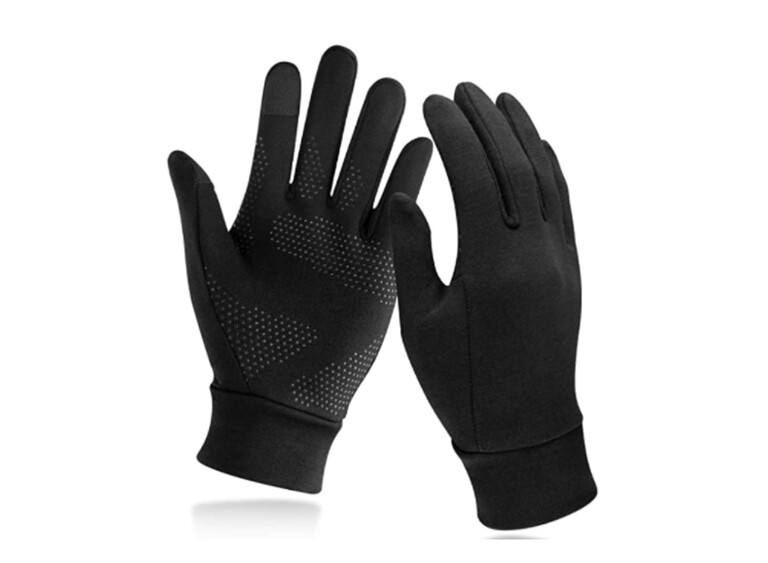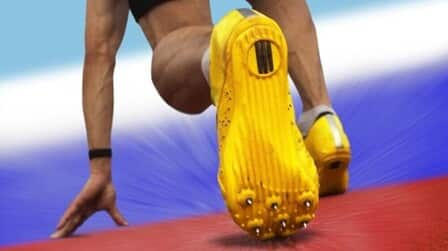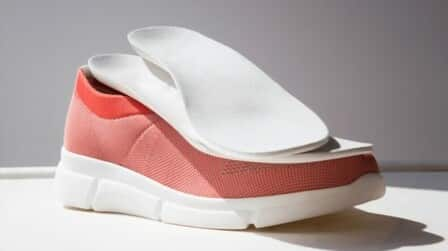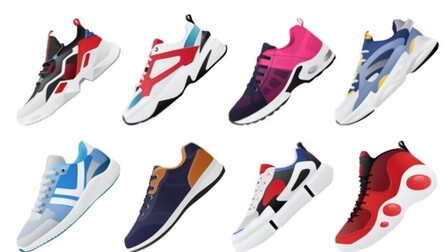For a professional athlete, even in extreme cold, there is no stopping them from running for miles around the neighborhood. This requires them to equip themselves with the right gear to stay warm and protect themselves from cold weather. In general, the hand is often the part that is subject to many surrounding obstacles when running in cold weather. If your hands are wet, they will feel cold and can distract you. One item that can help you overcome this situation is a running glove.
There are countless brands on the market that offer similar products, but what you need to keep in mind when buying running gloves for cold weather include waterproofing, breathability and sweat absorption, glove construction, materials,... as this ensures you can go for miles without worry. For how to choose running gloves for cold weather, please follow our page to understand better.
1. Materials of running gloves for cold weather

Usually running gloves are made of synthetic blends. However, the market still mainly uses the four most popular fabrics including Polyester, acrylic, fleece and polypropylene because they have similar features such as sweat absorption, breathability, warmth, wind and different waterproofing. .
- POLYESTER: this fabric will have high breathability and sweat absorption, while they keep hands dry and comfortable and maintain warmth. But they won't provide any kind of wind or waterproofing.
- ACRYLIC: these fabrics are resilient so they're very breathable, stretchy, and warm, but they don't offer much wind or waterproof performance.
- FLEECE: usually these are very warm because of the fleece. Conversely, they will not perform as well as other fabrics in terms of sweat absorption and breathability, except for gloves with different fabrics. In addition, some gloves will have a fleece lining on the outside, although they are still a regular cotton fabric to wipe sweat from the forehead.
- POLYPROPYLENE: Polypropylene material will usually provide high breathability and water repellency to help keep hands dry and warm, yet they still have the ability to breathe and manage moisture inside.
2. Waterproofing and windproofing of running gloves for cold weather
Most waterproof gloves are created by choosing fabrics that prevent water from entering the gloves or alternatively by applying substances to the surface of the fabric for the same effect. Creating a glove that is resistant to wind can use fabrics and incorporate technology that prevents air from moving from the outside to the inside. Often waterproof running gloves will also be wind resistant. Waterproof fabrics provide protection from the wind, and depend on how textured the fibers are woven together.
3. Grip of running gloves for cold weather
Saving moments on the road by taking selfies or taking pictures of your surroundings is fun, but wearing gloves will limit your ability to stick on objects and you certainly don't want to drop your phone when taking selfies. . Therefore, you should consider using clippable running gloves such as phones, keys, water bottles, dog leashes and trekking poles. Currently, companies are using silicone coatings on the palms and fingers inside the gloves to improve a good grip. However, the disadvantage of silicone nippers is that the gloves are heavy and can wear out with prolonged use.
4. Touchscreen capability of running gloves for cold weather

Our society today is living on modern technology, everything is done on connection, sometimes you want to answer a call, reply to a text message or take a photo while running. Enter running gloves with touchscreen capabilities. In general, this is a new form of technology and often has many unforeseen inadequacies. In the market some companies always appreciate their running gloves with touch screen capabilities but anyway you should read actual reviews before buying.
5. Convertible of running gloves for cold weather

The switchable glove counting prompt consists of an inner glove and an excess stored on the glove and can be executed as they are deployed when conditions permit. In addition, convertible gloves have become a tool for many mountaineers, arctic explorers and mountaineers. They've recently partnered with running gloves for versatility and you can adjust hand protection with ease as you move.
6. Fingerless of running gloves for cold weather

Some amputee gloves will be used in certain work and leisure situations where dexterity is required. In fact, they come in a variety of settings such as an inner glove that lacks a fingertip with a protective glove that can pass through the fingers or a glove with the tips of the fingers blocked. disappear. Their greatest benefit is unparalleled ingenuity. However, amputee gloves may not be suitable in bad weather because of their construction.
7. Breathability of running gloves for cold weather
Similar to other parts of the body, hands often have sweat glands that produce moisture when we are active. However, each individual will have different body temperature and sweat, but keeping hands dry, warm and comfortable should be a priority. The use of breathable running gloves to wick sweat away from the hands and into the outer layers of the glove, out into the air. It's all based on a combination of material and glove thickness.
8. Fit of running gloves for cold weather

Choosing running gloves should fit tightly to the hand, this is considered a second skin, providing more warmth. If you choose a pair of gloves that are too large, they will peel off and cause discomfort leading to cracking. If the glove is too small, it will cut off the circulation of the fingers, leading to hand numbness. Buying large or small glove products depends on individual preferences, anyway, how to wear knife gloves correctly is also very important. However, getting the right size gloves is difficult, because they come in many different hand shapes and sizes, or the sizing guides of different brands. That you can look at the reviews for a better choice. What's more, you also notice that each glove will have insulation to match the temperature as you run, breathe to remove sweat from your hands and protect your hands from the weather.
9. Measuring the temperature of running shoes
Often runners will start wearing gloves when the temperature hits 40 degrees Fahrenheit and will drop to the temperature level if really cold. Therefore, we should choose gloves with sufficient insulation for the running temperature. It turns out that different people or temperature environments experience cold periods differently, so let's apply practical experimentation to the suggested temperature ratings.
10. Thickness of running gloves for cold weather

Most running gloves are thicker on the back of the hand for better warmth and protection, while the palm will be constructed with a thinner mesh fabric for increased breathability. Meanwhile, the gloves are thicker due to the type of fabric or have extra lining to increase warmth.
11. Seasonality of running gloves for cold weather
Most gloves are usually worn year-round when the weather is cold, although they are not recommended for use in warm weather. In the fall and winter, invest in gloves with lining and windproof fabric, which will help keep your fingers warm and increase comfort. If in the spring, runners can skip the lining and prioritize using waterproof fabric when running in the rain.
12. Weight of running gloves for cold weather
Choosing gloves that are warm enough for a runner depends on the person's temperature and circulation. There are still some runners who will need to wear gloves for the duration of their run, while others can take them off and put them in their pockets. Choosing the right fabrics also provides warmth to the hands, and even lined gloves provide a certain amount of warmth. However, the fabrics also regulate the weight of the gloves, so you don't need to worry too much because they are light enough to not affect comfort.
Conclusion
Running gloves for cold weather are an essential tool when you are running long distances in inclement weather, not only protecting your hands from cold temperatures, helping you to keep your hands warm, but also preventing Surrounding objects from affecting your hands. However, you need to clearly understand the features, and how to choose them to suit your hand perfectly. Above is some information that we provide to answer your difficulties.













